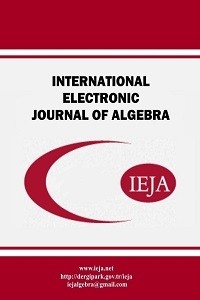Beyond Knuth's notation for unimaginable numbers within computational number theory
Literature considers under the name "unimaginable numbers" any positive integer going beyond any physical application. One of the most known methodologies to conceive such numbers is using hyper-operations, that is a sequence of binary functions dened recursively starting from the usual chain: addition - multiplication - exponentiation. The most important notations to represent such hyper-operations have been considered by Knuth, Goodstein, Ackermann and Conway as described in this work's introduction. Within this work we will give an axiomatic setup for this topic, and then try to nd on one hand other ways to represent unimaginable numbers, as well as on the other hand applications to computer science, where the algorithmic nature of representations and the increased computation capabilities of computers give the perfect eld to develop further the topic, exploring some possibilities to effectively operate with such big numbers. In particular, we will give some axioms and generalizations for the up-arrow notation and, considering a representation via rooted trees of the hereditary base-n notation, we will determine in some cases an effective bound related to "Goodstein sequences" using Knuths notation. Finally, we will also analyze some methods to compare big numbers, proving specically a theorem about approximation using scientic notation and a theorem on hyperoperation bounds for Steinhaus-Moser notation.
Keywords:
Computational number theory, unimaginable numbers, Knuth big data, number representation, Goodstein,
___
- W. Ackermann, Zum Hilbertschen Aufbau der reellen Zahlen, Math. Ann., 99(1) (1928), 118-133.
- L. Antoniotti, F. Caldarola, G. d’Atri and M. Pellegrini, New approaches to basic calculus: an experimentation via numerical computation, In: Y.D. Sergeyev and D. Kvasov (eds.) Numerical Computations: Theory and Algorithms NUMTA 2019, Lecture Notes in Computer Science, vol. 11973 (2020), Springer, Cham, 329-342.
- L. Antoniotti, F. Caldarola and M. Maiolo, Infinite numerical computing applied to Hilbert’s, Peano’s, and Moore’s curves, Mediterr. J. Math., 17(3) (2020), 99 (19 pp).
- G. d’Atri, Logic-based consistency checking of XBRL instances, IJACT 3 (2014), 126-131.
- A. A. Bennett, Note on an Operation of the Third Grade, Ann. of Math, Second Series, 17(2) (1915), 74-75.
- J. Bowers, Exploding Array Function, Retrieved on 21-11-2018, http://www.polytope.net/hedrondude/array.htm.
- F. Caldarola, The exact measures of the Sierpi´nski d-dimensional tetrahedron in connection with a Diophantine nonlinear system, Commun. Nonlinear Sci. and Numer. Simul., 63 (2018), 228-238.
- F. Caldarola, The Sierpinski curve viewed by numerical computations with infinities and infinitesimals, Appl. Math. Comput., 318 (2018), 321-328.
- F. Caldarola, D. Cortese, G. d’Atri and M. Maiolo, Paradoxes of the infinite and ontological dilemmas between ancient philosophy and modern mathematical solutions, In: Y.D. Sergeyev and D. Kvasov (eds.) Numerical Computations: Theory and Algorithms NUMTA 2019, Lecture Notes in Computer Science, vol. 11973 (2020), Springer, Cham, 358-372.
- F. Caldarola, G. d’Atri, M. Maiolo and G. Pirillo, New algebraic and geometric constructs arising from Fibonacci numbers. In honor of Masami Ito, Soft Computing, 24(23) (2020), 17497-17508.
- F. Caldarola, G. d’Atri, M. Maiolo and G. Pirillo, The sequence of Carboncettus octagons, In: Y.D. Sergeyev and D. Kvasov (eds.) Numerical Computations: Theory and Algorithms NUMTA 2019, Lecture Notes in Computer Science, vol. 11973 (2020), Springer, Cham, 373-380.
- F. Caldarola, G. d’Atri, P. Mercuri and V. Talamanca, On the arithmetic of Knuth’s powers and some computational results about their density, In: Y.D. Sergeyev and D. Kvasov (eds.) Numerical Computations: Theory and Algorithms NUMTA 2019, Lecture Notes in Computer Science, vol. 11973 (2020), Springer, Cham, 381-388.
- F. Caldarola and M. Maiolo, On the topological convergence of multi-rule sequences of sets and fractal patterns, Soft Computing, 24(23) (2020), 17737- 17749.
- F. Caldarola, M. Maiolo and V. Solferino, A new approach to the Z-transform through infinite computation, Commun. Nonlinear Sci. Numer. Simul., 82 (2020), 105019.
- J. W. S. Cassels, An Introduction to Diophantine Approximation, Cambridge University Press, New York, 1957.
- J. H. Conway and R. K. Guy, The Book of Numbers, Copernicus, New York, 1996.
- R. L. Goodstein, Transfinite ordinals in recursive number theory, J. Symbolic Logic, 12 (1947), 123-129.
- R. L. Goodstein, On the restricted ordinal theorem, J. Symbolic Logic, 9 (1944), 33-41.
- D. E. Knuth, Mathematics and computer Science: coping with finiteness, Science, 194(4271) (1976), 1235-1242.
- A. Leonardis, Continued fractions in local fields and nested automorphisms, Ph.D. thesis, 2014.
- R. Munafo, Inventing New Operators and Functions, Large Numbers at MROB, Retrieved on 19-11-2019.
- R. Munafo, Versions of Ackermann’s Function, Large Numbers at MROB, Retrieved on 19-11-2019.
- K. K. Nambiar, Ackermann Functions and Transfinite Ordinals, Appl. Math. Lett., 8(6) (1995), 51-53.
- R. Rucker, Infinity and the Mind: The Science and Philosophy of the Infinite, Princeton University Press, Princeton, NJ, 2019.
- Y. D. Sergeyev, Numerical point of view on Calculus for functions assuming finite, infinite and infinitesimal values over finite, infinite and infinitesimal domains, Nonlinear Anal., 71(12) (2009), 1688-1707.
- H. Steinhaus, Mathematical Snapshots, 3rd Edition, Oxford University Press, New York, 1969.
- ISSN: 1306-6048
- Yayın Aralığı: Yılda 2 Sayı
- Başlangıç: 2007
- Yayıncı: Abdullah HARMANCI
Sayıdaki Diğer Makaleler
On $+\infty$-$\omega_0$-generated field extensions
Erwin CERDA-LEON, Hugo RINCON-MEJIA
